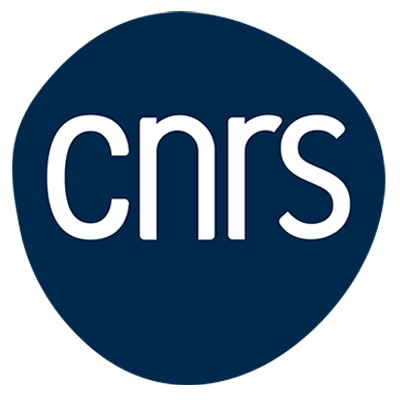IEA QUAP
French-Australian International Emerging Action in solid-state quantum optics.IEA QUAP
2019-2021
Contacts:
France:
Dr. Maxime ; maxime.richard@neel.cnrs.fr
Australia:
Prof. Thomas Volz ; thomas.volz@mq.edu.au

fig.X – Artist representation of the open fibre-based microcavity system: the end surface of an optical fiber (top of the image) presents an indentation (a concave spherical shape) in the region of the fiber core, which is coated with a highly reflective Bragg mirror. A half-cavity lies below with a semiconductor quantum well embedded in the cavity layer (white slab), and the bottom Bragg mirror below (layers below). (Figure credit: Andrew Wood)
Introduction
IEA QUAP stand for Quantum Polaritonics. In the present context of blooming quantum technologies, the need for practical sources of quantum light are is pressing. The most developed solid-state systems proposed so far rely on advanced semiconductor nanotechnologies, in which nanometer-scale potential traps are engineered in order to confine electronic excitations into the quantum regime. The aim of QUAP is to explore an alternative strategy in which the electronic confinement is not required. The quantum regime is instead achieved by engineering a large Coulomb interaction between the electronic excitations, and stronger interaction with light. Such systems have the potential to be simple to fabricate and would be tunable to a much higher degree.
THE IDEA
Exciton-polaritons are hybrid states that are half photonic and half electron-hole in nature. They are engineered in a particular semiconductor optical microcavity design, in which the so-called “strong coupling regime” is achieved. Owing to their photonic nature, polaritons provide a direct interface with light. Owing to their electronic nature, they are subject to strong Coulomb interaction with each other.
When these interactions are strong enough, the presence of a polariton inside the cavity shifts its resonance, such that a second polariton cannot be created. This is the so-called regime of Coulomb blockade for polaritons[1]. In implementing this strategy, the challenge is to maximize the magnitude of this interaction, which is general not large enough as is. In QUAP our aim is to implement this strategy and enhance the interaction by photonic confinement, i.e. at the micrometer scale.
This is done in a in a confocal open fiber-based microcavity in the strong coupling regime, in which a one micrometer polaritonic mode volume is achieved, without introducing additional radiative losses that would be detrimental to the blockade mechanism[2]. A sketch of this microcavity is shown in Fig.X (on the left side of this page). In order to get deep into the quantum regime, we also plan to shrink further this mode volume by the introduction of intracavity polaritonic lenses.
[1] A. Verger, C. Ciuti, & I. Carusotto, I. Polariton quantum blockade in a photonic dot, Phys. Rev. B 73, 193306 (2006).
[2] B. Besga et al. Polariton Boxes in a Tunable Fiber Cavity, Phys. Rev. Applied 3, 014008 (2015).
Collaboration
The experiments take place in the group of prof. Thomas Volz and his team at Macquarie Uni., Sydney, where the fiber-microcavity is being developed. With the support of the Australian Research Council (ARC)’s center of excellence for engineered quantum system (EQUS), Macquarie University, and CNRS’s International Emerging Actions, Maxime Richard and Thomas Volz have built up a very active collaboration which is based on the complementarity of their expertise in solid-state quantum optics. This collaborative knowledge has proven so far the key enabler in this and other projects.
institutions and laboratories involved
France:
• Dr Maxime Richard (Institut Néel, CNRS – Université Grenoble Alpes – Grenoble INP)
Australia:
• Prof. Thomas Volz (Macquarie University)
NEWS
Very recently, we were able to demonstrate for the first time the build-up of weak quantum correlations in this system. Interestingly, another group led by Prof. A. Imamoğlu obtained simultaneously a quantitatively nearly identical result, in a similar fiber-cavity system[1]. We published the two results as two back-to-back articles in Nature Materials :
- Muñoz-Matutano, A. Wood, M. Johnson, X. Vidal Asensio, B. Baragiola, A. Reinhard, A. Lemaître, J. Bloch, A. Amo, B. Besga, M. Richard and T. Volz “Quantum-correlated photons from semiconductor cavity polaritons”, Nature Materials 18, 213–218 (2019)
https://doi.org/10.1038/s41563-019-0281-z
[1] A. Delteil et al. Nature Materials, 18, 219 (2019)
